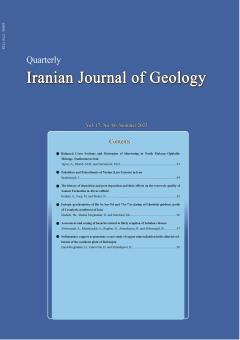-
-
List of Articles
-
Open Access Article
1 - Balanced Cross Sections and Determine of Shortening in North Makran Ophiolite Mélange, Southeastern Iran
Azizollah Tajvar Mohammad Mahdi Khatib Mohamad Hossian Zarinkoub -
Open Access Article
2 - Paleoflora and Paleoclimate of Norian (Late Triassic) in Iran
JAVAD SAADATNEJAD -
Open Access Article
3 - The history of deposition and post-deposition and their effects on the reservoir quality of Asmari Formation in Ahvaz oilfield
Akbar Heidari Milad Faraji Narges Shokri -
Open Access Article
4 - Isotopic geochemistry of Rb-Sr, Sm-Nd and 40Ar-39Ar dating of Ghoshchi gabbros, north of Uromiyeh, northwest of Iran
Sh. Shahabi Hadi Shafaii Moghadam Ghasem Ghorbani -
Open Access Article
5 - Assessment and zoning of hazards related to likely eruption of Sabalan volcano
Ahmad Abbasnejad Ahmad khayatzadeh Hojatollah Ranjbar Hamid Ahmadipour behnam Abbasnejad -
Open Access Article
6 - Sedimentary coppers as gemstone: a case study of copper mineralization in the alluvial sediments of the southern plain of Rafsanjan
H. Zand-Moghadam Amir hossein Tahernia H. Ahmadipour
-
The rights to this website are owned by the Raimag Press Management System.
Copyright © 2017-2026







